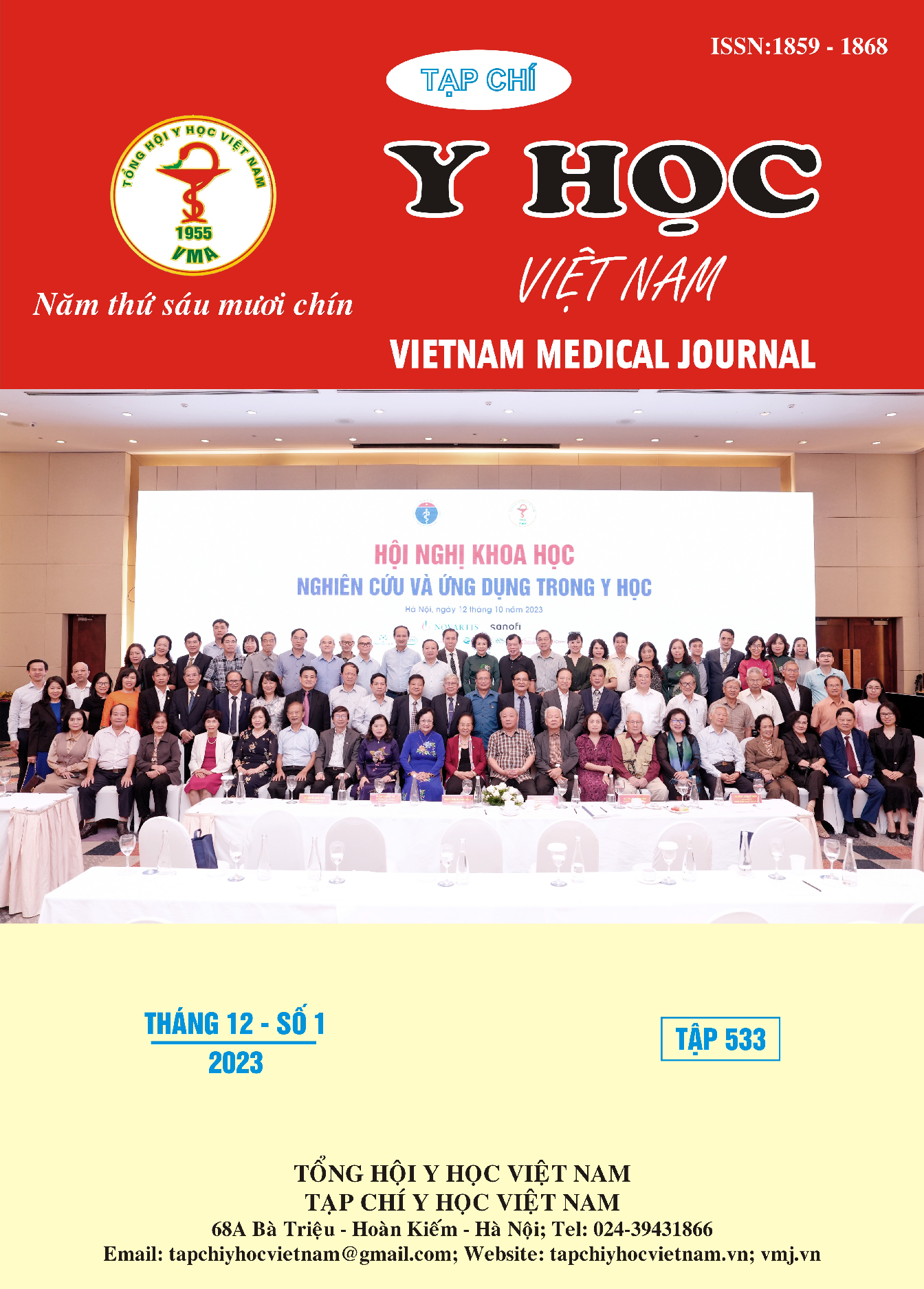CLINICAL AND PARACLINICAL CHARACTERISTICS AND SOME RELATED FACTORS IN RELAPSED BASEDOW’S DISEASE AFTER ANTITHYROID DRUGS
Main Article Content
Abstract
Aims: To investigate patient characteristics, and some related factors in recurrent Basedow’s disease after antithyroid drugs. Methods:A prospective cross-sectional study groups of Basedow patients who received enough drug treatment regimen, are prescribed by the doctor to stop the drug and relapse after that, visit the Outpatient Deparment of Bach Mai Hospital from October 2022 to June 2023. Results: The mean age of the study group is 40,3 ± 12,025 years old. The female: male ratio in the group of patients with relapse is 4,5 : 1. The mean duration of disease is 79,27± 49,2 months, of treatment is 24,51± 7,06 months, of disease recurrence is 20,61 ± 17,92 months. There are 72,3% of patients treated with Imidazol drug. The clinical symptoms of the group of patients with relapse were similar to the newly Graves patients. The mean thyroid volume of the group of relapsed patients was 41.55 ± 24.34, the mean TRAb concentration was 11.23 ± 5.92 higher than the control group. Patients with relapse have a higher rate of smoking (69.7%), stress (75.8%) or using drugs or foods containing a lot of iodine (18.2%), a higher rate of adherence to treatment lower than the control group. Conclusion: Recurrent Basedow patients are relationship with gene, age, and some factors related to disease recurrence: Adherence to treatment, smoking, stress, use of foods or medicines containing a lot of iode
Article Details
Keywords
relapsed Basedow‘s disease, antithyroid drugs, TRAb.
References
2. Liu L, Lu H, Liu Y, Liu C, Xun C. Predicting relapse of Graves' disease following treatment with antithyroid drugs. Exp Ther Med. 2016;11(4): 1453-1458.
3. B Q, Oe J, K M. [Problems and new developments in the management of Graves’ disease: medical therapy]. Z Arztl Fortbild Qualitatssich. 2004;98 Suppl 5:37-44
4. Lê Tuyết Hoa. Đặc Điểm Người Bệnh Basedow Tái Phát.Kỷ yếu Đại hội Nội tiết - Đái tháo đường -RLCH toàn quốc lần thứ IX, Trường Đại học Y Phạm Ngọc Thạch; 2018.
5. Bai Y, editor. Thyroid disease: Basic and Clinic. Beijing Scientific and Technological Literature Publishing House; Beijing: 2003. Hyperthyroidism; pp. 244–278. 1st.
6. Diagne N, Faye A, Ndao AC, et al. Aspects épidémiologique, clinique, thérapeutique et évolutif de la maladie de Basedow en Médecine Interne au CHU Ledantec Dakar (Sénégal). Pan Afr Med J. 2016;25.
7. Struja T, Fehlberg H, Kutz A, et al. Can we predict relapse in Graves’ disease? Results from a systematic review and meta-analysis.Eur J Endocrinol. 2017;176(1):87-97.
8. Solomon BL, Evaul JE, Burman KD, Wartofsky L. Remission rates with antithyroid drug therapy: continuing influence of iodine intake?. Ann Intern Med. 1987;107(4):510-512.
9. Vita R, Lapa D, Trimarchi F, Benvenga S. Stress triggers the onset and the recurrences of hyperthyroidism in patients with Graves' disease. Endocrine. 2015;48(1):254-263.


